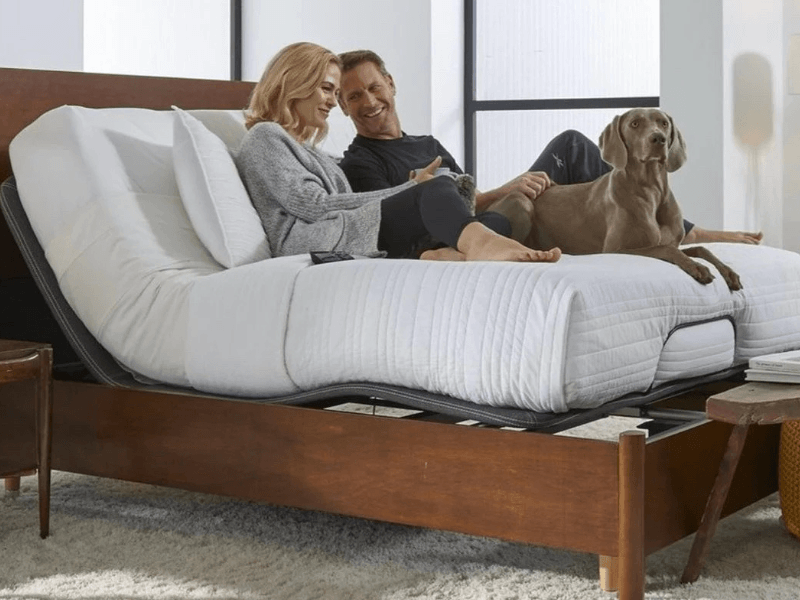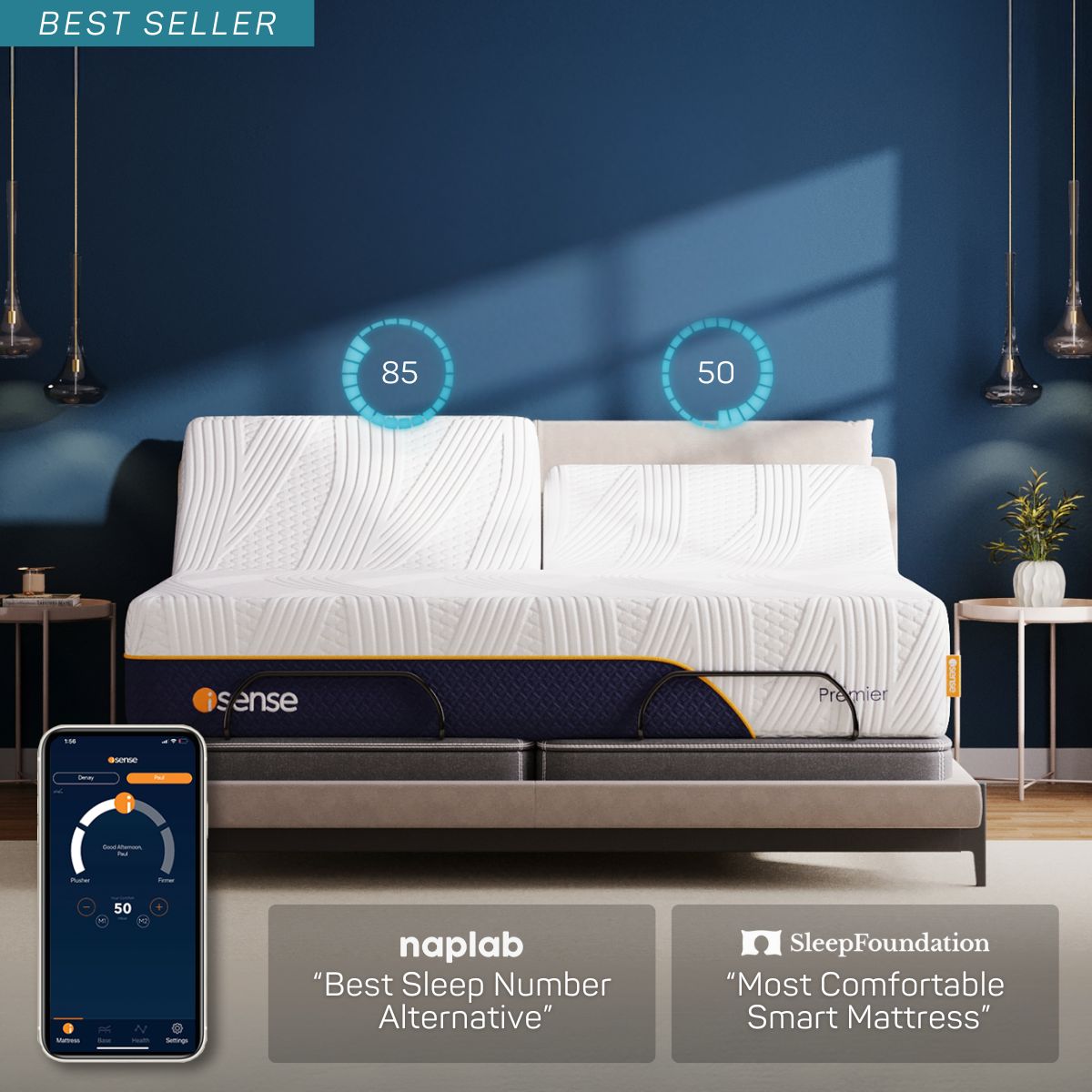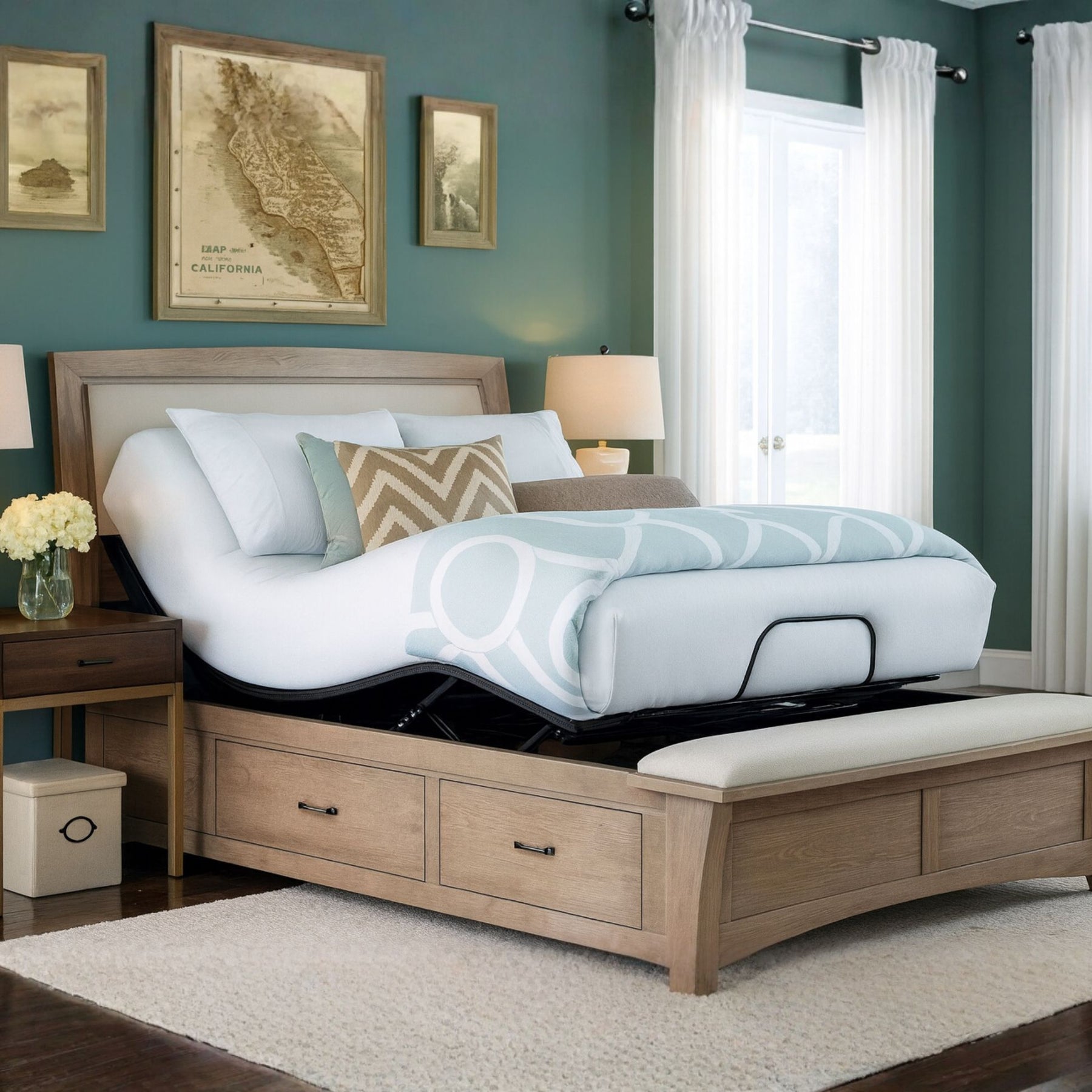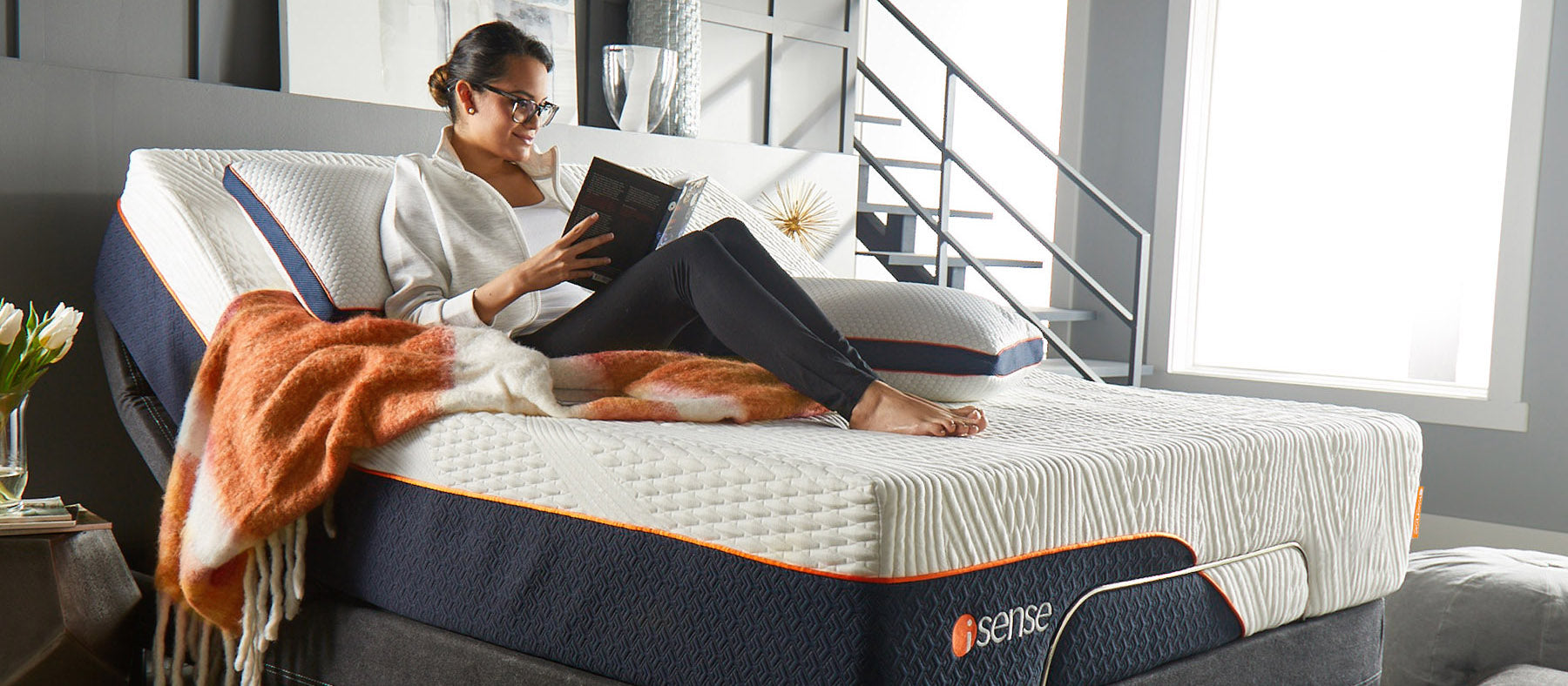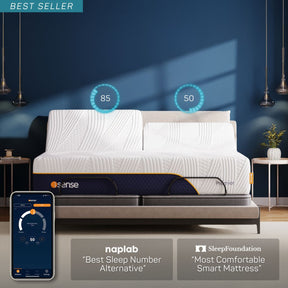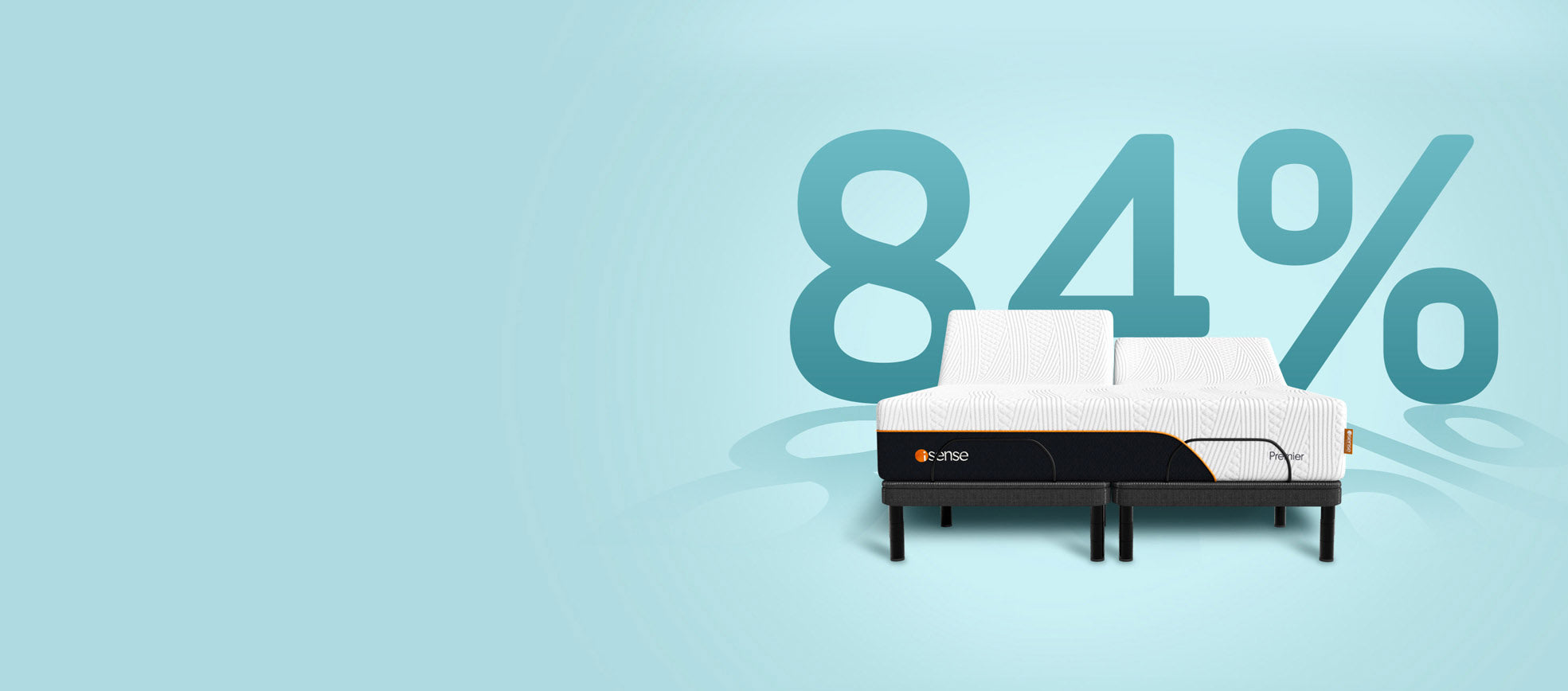Back pain is something none of us want to experience, and yet, it's something almost everyone has to deal with at one point or another. The good news is that something as small as a mattress can go a long way towards helping manage back pain for the long haul. But with endless options, how do you know which mattress is the best for back pain relief? Never fear – with a few simple tips, you can navigate the mattress-buying world like a pro. In this post, we’ll share everything you need to know about choosing a mattress to alleviate back pain. Start your journey to a better night's rest and a less achy morning.
Quick Breakdown of Key Point
When selecting a mattress for back pain, you should consider the type of mattress, the firmness level of the mattress, the at-home trials offered by the company, and any additional features like cooling technology. You should also make sure to read reviews from customers who have experience purchasing mattresses for their specific needs.
Mattress Types to Consider for Back Pain
When shopping for a mattress to relieve back pain, there are several types of mattresses to consider. Innerspring mattresses are the most traditional and widely available for purchase, and many people find them to be comfortable and cost-effective. However, they may not be the best choice for those with chronic back pain, as they offer little support and can cause discomfort due to motion transfer from tossing and turning during sleep. Innerspring mattresses require box springs for added support and longevity of the mattress.
Foam mattresses are an increasingly popular choice among those seeking relief from back pain due to their ability to conform around the body’s contours and provide more comfort than innerspring mattresses. They are also better at absorbing movement created when tossing and turning throughout the night. However, foam mattresses can heat up quickly and can trap body heat over time, making them a less than ideal option for hot sleepers or those who tend to sweat when sleeping. It is important to find a foam mattress built with open-cell, breathable foam to prevent night sweats.
Hybrid mattresses are often recommended for sufferers of back pain because they combine the comfort of memory foam layers with the support of innersprings. They can come in many different designs, using a combination of these materials and more. Hybrid mattresses can offer much-needed relief from muscle stiffness common with chronic back conditions but are usually more costly than innerspring or foam mattresses. Also, since hybrid mattresses use multiple materials instead of just one, it’s typically harder to determine whether or not a hybrid mattress will actually give you the desired back pain relief you’re looking for. Since the construction of the mattress can vary, it is important to ask questions about each layer of the construction.
Airbeds can be a good option when it comes to relieving back pain, as they can easily be adjusted to offer different levels of firmness on either side of the bed depending on your needs. However, airbeds require more maintenance than other types of mattresses as they must be inflated periodically and parts may wear out over time. Additionally, airbeds tend to be quite expensive compared to other mattress types which can make purchasing one difficult financially. Airbeds such as number beds also tend to sag and dip over time.
There are other adjustable mattresses on the market, such as the iSense Classic and iSense Hybrid Premier. The iSense Classic is a foam mattress with adjustability on both sides of the bed, and the iSense Hybrid Premier combines the best of air, foam and coils to create an adjustable but firm foundation. Each bed offers 20 different comfort settings with consistent pressure to adapt with you as your health needs change.
In conclusion, while all types of mattresses have their advantages and disadvantages when it comes to providing back pain relief, it’s important to consider all angles before deciding which mattress is right for you. With so many types on the market today, it's wise to weigh your options before committing to one type or another. Now that we have discussed the different types of mattresses available for relieving back pain, let's move onto how to choose a mattress for back pain relief.
- A review of 35 studies concluded that memory foam mattresses are better than innerspring mattresses in providing relief from lower back pain.
- A commonly-cited systematic review of sleep positioners and mattresses found that medium-firm mattresses were superior to firm mattresses in reducing lower back pain. However, it is important to note that medium-firm is subjective and your perception of firmness may be different from someone else.
- A study of 150 patients found that an adjustable air mattress was more effective than a conventional spring mattress in reducing nighttime lower back pain.
How to Choose a Mattress for Back Pain
When it comes to selecting the best mattress for back pain relief, there is a lot of debate surrounding what type of mattress works best. Memory foam, innerspring, latex, hybrid—the options are seemingly endless. Pressure relief plays a key role in relieving tension in the spine and joints. However, some types of mattresses that offer superior support can be too hard for those suffering from back pain. Considering certain details can make purchasing the right mattress easier.
Memory foam mattresses
Memory foam contours to the body for comfort and support, softening pressure points on areas prone to aches and pains. They also help maintain a neutral posture throughout the night, taking stress off of lower back muscles. The downside of memory foam is that it can cause excessive heat retention due to its dense construction. This can be avoided by choosing a foam mattress built with open-cell, breathable foam.
Innerspring mattresses
These mattresses provide excellent support but can cause excessive movement because of the bouncing effect created by their springs and box springs. This may make them less desirable for couples who move around at night because they will disturb their partner’s sleep if they move around too much. Finding a mattress with more motion isolation may help to achieve optimal sleep. If a person has more than one favored sleeping position an innerspring mattress may not be suitable since they lack sufficient body contouring capabilities to switch positions comfortably during the night.
Hybrid mattresses
Hybrid mattresses are created using a combination of materials such as springs, memory foam, air or latex which can provide greater body contouring and optimal comfort than regular spring mattresses. They offer better motion isolation so that partners sleeping together are less likely to disturb each other when tossing around at night or getting out of bed in the morning. Hybrid models tend to be more expensive than their traditional counterparts but generally provide superior levels of support than all-foam or all-spring models making them worth considering for those suffering from back pain.
When choosing a mattress for back pain relief, it is important to consider your own individual needs including budget, sleep position and material preferences before making a final decision. And it is also important to take into account the at-home trials and return policies of different mattress companies. Considering these factors will help you select a mattress which is tailored specifically to your desired level of comfort and support needs.
Now that we have discussed how to choose a mattress for back pain relief, let’s move on to explore the different types of materials available in order to further narrow down your selection process in our next section, considering the mattress materials.
Most Important Points
When selecting a mattress for back pain relief, people should consider their budget, sleep preferences, and materials. Memory foam mattresses provide comfort by contouring to the body and providing pressure relief, but can retain heat if not constructed with open-cell foam. Innerspring mattresses provide some level of support but may be too bouncy if couple sleeps in different positions. Latex mattresses are great supportive elements and are resistant to dust mites and allergies but may be too expensive for some budgets. Hybrid mattresses offer superior body contouring support and motion absorption compared to other types of mattresses, although they tend to be a bit more expensive.
Consider the Mattress Materials
When selecting the right mattress for back pain relief, it is essential to evaluate the mattress materials. Mattress manufacturers use a variety of materials that are intended to combine comfort and durability. Popular options include memory foam, latex foam, hybrid foam mattresses, innerspring mattresses and airbeds. Many hybrid mattresses use a combination of these materials in multiple layers to provide optimal comfort.
Memory foam is one of the most popular materials used in mattresses. Memory foam also helps to reduce motion transfer between sleeping partners. On the other hand, some people find the material too hot and smothering, as it can trap heat in its structure.
Latex foam offers similar levels of body-contouring pressure relief as memory foam but makes use of an open cell structure that better facilitates breathability. As a result, many users reported fewer issues with sleeping hot on latex models when compared to memory foam alternatives. However, latex arrives at a higher price point than most other mattress materials due its natural origins. And it is important to note that many memory foam mattresses now offer beds and sleep number alternative beds made with open-cell foam and additional cooling treatments to prevent overheating.
Hybrid foam mattresses offer a combination of the contouring benefits offered by a layer or two of memory or latex foam layered above a core of pocketed coils that provide increased airflow and enhanced responsiveness to movement. These types of mattresses are often able to appease both sides of the debate between those who want soft cushioning and those who prefer firmer support more effectively than either all-foam or traditional innerspring models provide.
When evaluating innerspring mattresses, it is important to look past the hype surrounding coil count and focus instead on the gauge thickness of the steel wire and how tightly joined the coils are together (i.e., look for high-gauge coils with lower gauges that are joined together with smaller amounts of space between them). Innerspring mattresses usually also need box springs to maintain the life of the mattress.
Airbeds offer adjustable firmness settings that make them great choices for couples with different support preferences or those who may have shifting sleep needs over time due to medical conditions like arthritis or chronic back pain. There are other types of adjustable mattresses, too, however, such as the iSense Classic and iSense Hybrid Premier. These are adjustable firmness mattresses with 20 different comfort settings on each side of the bed.
Given all this information available at hand, it can be intimidating trying to navigate through all these materials and decide which one best suits your needs and budget when selecting a mattress for back pain relief. It can also be difficult to wade through the mattress jargon and gimmicks often presented within descriptions of the materials.
With this in mind, assessing the mattress’ firmness should be a key part of the decision making process and should be carefully considered before making any final purchases. In the next section, we will dive further into what you should keep in mind when evaluating mattress firmness levels and why this matters for relieving back pain.
Assess the Mattress Firmness
When shopping for a mattress for back pain relief, assess the mattress firmness to ensure you get the right amount of support. Mattresses can range from extra firm to super soft according to their level of firmness. Each type has its pros and cons, so it’s essential to consider the unique needs of your back when making a selection. It can be difficult to ascertain how “firm” or “soft” a mattress is without sleeping on it, so be sure to find a company with generous at-home trials so you can try the mattress you prefer for at least a few weeks.
Extra firm mattresses provide maximum support and some people with chronic lower back pain may prefer this kind of bed. Since they’re very stiff, some may find them difficult to sleep in. On the other hand, those who prefer sleeping on softer surfaces may find extra firm mattresses uncomfortable since they don’t contour to the body’s natural shape.
Medium-firm mattresses offer a balance between comfort and support and are a popular choice with people who suffer from lower back pain. They won’t be as uncomfortable as an extra firm mattress while still providing adequate support. However, it is important to take into consideration that this type of mattress may not be comfortable over longer periods of time or if the person prefers a softer surface. This is why it is important choose a company with an at-home trial of at least one month, preferably more, so you can determine whether it works for you.
Some soft mattresses won’t provide enough support for people with lower back pain but can be ideal for those who need less structure and more contouring pressure relief. While these mattresses are often considered to be quite comfortable, some soft mattresses can cause poor posture by sinking. However, if it is constructed properly, it should provide both comfort and pressure relief. iSense adjustable mattresses offer the same level of pressure-relief at soft settings as at firm settings.
Ultimately, determining the best mattress firmness depends on personal preference and what your specific needs are when it comes to relieving back pain. An effective way to find out which one is best for you is to test different levels of firmness at mattress stores or when ordering online.
Once you have determined the most suitable mattress firmness for your specific needs, it's important to consider what size mattress will fit your lifestyle best. In the following section we will discuss how you can determine the optimal mattress size.
Determine the mattress size
When determining the size of the mattress for back pain relief, there are two important considerations: personal preference and suitability for your space. The size you choose should be based on ensuring comfort and providing adequate body support to ensure a good night’s sleep.
Personal preference is always an important factor when selecting a correct size mattress. It is essential to consider the individual sleeping habits and position so that they have adequate room to move in their sleep without feeling cramped or restricted. Many couples also require additional space provided by a larger mattress, so that both individuals can move independently but still feel connected and be close.
In addition, size should always be considered in relation to the room it will occupy. You should measure the area where it will go before purchasing any type of bedding to make sure that the mattress fits comfortably within its space. When choosing a size, consider how much floor space is available, remembering that allowing enough room around the bed is important for ease of movement as well as overall bedroom aesthetics.
For those who are torn between two sizes, opting for something slightly larger may provide more room and comfort for those who tend to toss and turn during the night. Ultimately, only you can decide what works best for you and your lifestyle, but it’s important to acknowledge how space is allocated when making this choice.
Now that you have determined which mattress size is right for you, it's time to move on and find the best mattress for back pain relief.
Finding the Best Mattress for Back Pain
Finding the best mattress for back pain requires careful consideration. Different mattress preferences may be necessary for different individuals, as individual back and sleeping needs vary. In order to identify the best mattress for one’s back pain, it is important to evaluate the type of mattress and specific health-related issues.
When determining which type of mattress is best for relieving back pain, people can debate between memory foam mattresses, coil mattresses, and hybrid mattresses. Memory foam produces a pillow-top effect and contours to the body – however, individuals must be sure to find one with cooling treatments to avoid overheating. Coil mattresses have innerspring coils that provide comfortable support while allowing better air circulation; they tend to be firmer than memory foams and may be perfect for those who need slightly bouncy, firm support. They usually require a box spring. Hybrid mattresses can be a combination of both coil and memory foam layers, as well as other materials, providing additional support. Some have adjustable bases so that you can customize the height or firmness level of your mattress.
Individuals must also assess their sleeping positions when choosing a mattress to relieve back pain. People usually have a preferred sleeping position, but most people move to some degree throughout the night. Side sleepers typically prefer softer mattresses that cushion their shoulders and hips; too firm of a mattress can cause discomfort when pressure points are not properly supported by the bed. Stomach sleepers require mid-firmness beds that don’t contour around their torso too much – otherwise, back problems could occur from putting too much strain on the lower spine throughout the night. People who sleep on their backs usually prefer slightly firmer beds that help keep their spine from curving.
After considering these factors in detail, individuals can begin assessing their own specific needs to determine which type of mattress would be most beneficial in relieving their back pain. From there, they will be well-equipped to move forward in finding the best mattress available for achieving high-quality sleep without discomfort or aggravating existing back issues. Now that we have discussed how to find the best mattress for back pain that addresses an individual's unique needs, let us move onto how one should assess their sleeping position when selecting a mattress specifically suited to address this issue.
Assess your Sleeping Positions
When picking the best mattress for back pain relief, assessing your sleeping positions is an important step. It’s common knowledge that a good night’s sleep helps alleviate body aches and pains; this includes reducing or eliminating back pain. Each individual has different sleep needs, so it’s important to understand the kind of sleeper you are to make sure you’re getting the right support from your mattress.
For instance, if you’re a side sleeper, then you’ll need a mattress that offers enough cushion and softness on the surface to prevent pressure points on your hips and shoulders while allowing your spine to stay in alignment. On the other hand, sleeping on your back may require a firmer mattress that can support your entire spinal column with minimal sinking for true ergonomic support.
Ultimately, there is no one-size-fits-all solution when it comes to selecting the best type of mattress for back pain relief – it all depends on personal preference for comfort versus proper spinal and neck alignment.
Now that you have assessed your sleeping positions, think about your body type when choosing the best mattress for back pain relief.
Conclusion
Choosing the right mattress for back pain relief is an important decision and can make all the difference in your level of comfort and overall sleep quality. A mattress that is supportive and comfortable will be key to helping you manage your back pain. Before buying, determine what type of mattress is best for you based on the type of back pain you’re experiencing, as well as your lifestyle and preferences. And of course, take advantage of the company’s at-home trial to allow your body to adjust to the new mattress feel.
Regardless which type of mattress you choose, it’s important that you try it out before making a purchase in order to ensure it meets your comfort and support needs. Keep in mind that finding the ideal mattress for back pain relief may take some trial and error. Regulating your sleeping environment with the recommended temperature and light conditions can also help you achieve a better quality of sleep and reduce symptoms associated with certain types of back pain.
Responses to Frequently Asked Questions with Explanations
What type of mattress is best for people with back pain?
The best type of mattress for people with back pain is one that provides pressure relief, comfort and support. For the most comfort and pressure relief, beds made from memory foam are recommended. Additionally, firmer mattresses are typically better for alleviating chronic back pain, as they provide increased support. For those on a budget or who prefer an innerspring mattress, look for one with individually wrapped coils that minimize motion transfer and also conform to your body shape, such as hybrid models. Finally, adjustable mattresses such as the iSense Classic or iSense Hybrid Premier offer adjustability on both sides of the bed with consistent pressure relief.
What types of materials are recommended for mattresses that provide back pain relief?
Memory foam is known for its pressure-relieving abilities and contouring properties. It is a synthetic polyurethane foam that distributes body weight evenly and cushions the body's curves, allowing for optimal spine alignment. Memory foam is highly recommended for those suffering from spinal stenosis or arthritis since it helps to reduce joint pain pressure.
Latex mattresses provide excellent support and have an incredibly long lifespan. Unlike other materials, latex takes the shape of your body while you sleep so there is no gap between the mattress and your body. This leads to better spine alignment and reduces back pain.
Hybrid mattresses are a combination of memory foam, air, and/or latex and coils/innersprings. The innersprings provide more responsiveness than memory foam or latex alone. Plus, hybrid mattresses can be customized with different layers — so you can adjust for your desired comfort level as well as back support needs.
In short, memory foam, latex and hybrid mattresses can all provide excellent back pain relief due to their responsive support characteristics and ability to conform to your bodies shape during sleep. Adjustable firmness mattresses such as the iSense Hybrid Premier apply the best of air, coils and foam to create a bed with both adjustable support and consistent pressure relief across settings.
What features should I look for in a mattress for back pain?
When looking for a mattress to relieve back pain, there are several features that should be considered. First, it is important to find a mattress with adequate support and firmness. A mattress with the right combination of support and firmness can help keep the spine aligned and properly supported during sleep. Additionally, finding a mattress that is at least 10 inches in thickness can ensure enough surface area for comfortable sleep without putting too much pressure on any one area of the body.
Another important feature to consider when selecting a mattress for back pain relief is temperature regulation. A mattress with materials like memory foam or latex can help regulate body temperature and avoid heat build-up during the night, which can contribute to discomfort and an disturbed sleep pattern. Many mattresses offer additional cooling treatments to prevent night sweats.
Next, finding a mattress with good edge support is also an important feature in providing back pain relief as this can help to evenly distribute weight and provide more sleeping surface area. Ultimately, when shopping for a mattress it is important to find a mattress that offers plenty of comfort without sacrificing support and stability
Finally, selecting a mattress from a company that offers generous at-home trials will allow you to try the mattress risk-free before committing completely to one. Be sure to read the reviews about the ease of returns to ensure you are able to easily send the mattress back if needed! Sleeping on a mattress for at least a few weeks gives your body time to adjust to the new feel.








